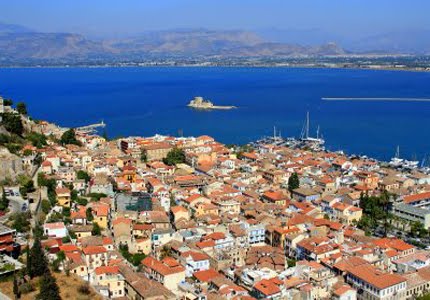Πρόκειται για τον σημαντικότερο ίσως ζωγράφο της Κρητικής Σχολής. Γεννήθηκε στο Ηράκλειο (Candia) γύρω στο 1540 και διδάχτηκε την τέχνη της ζωγραφικής στη Σχολή της Αγίας Αικατερίνης των Σιναΐτων. Στα έργα του αναδεικνύεται η θαυμαστή συνύπαρξη της βυζαντινής αγιογραφίας με τις τεχνικές της δυτικής ζωγραφικής και της αναγεννησιακής τέχνης. Έχει φιλοτεχνήσει πολλά έργα τα οποία βρίσκονται διάσπαρτα σε συλλογές από τον Άγιο Γεώργιο της Βενετίας και το Βυζαντινό Μουσείο Αθηνών έως και την Βυζαντινή Συλλογή της Αγίας Αικατερίνης των Σιναΐτων όπου εκτίθενται έξι από τις σημαντικότερες εικόνες του οι οποίες ανήκαν στην Μονή Βροντησίου όπου πιθανολογείται ότι εργάστηκε για μεγάλο χρονικό διάστημα στο εκεί εργαστήριο αγιογραφίας.
Michael Damaskenos or Michail Damaskenos (Greek: Μιχαήλ Δαμασκηνός, 1530/35-1592/93) was a leading post-Byzantine Cretan painter. He is a major representative of the Cretan School of painting that flourished in the 16th and 17th centuries, whilst Crete was under Venetian rule. He was a near-contemporary of the most famous Cretan painter of any period, El Greco, but though Damaskinos also went to Italy, he remained much closer to his Greek roots stylistically.
There is little information regarding the life of Damaskinos. He was born in Candia (today's Herakleion), the son of Tzortzis Damaskinos. He had a daughter named Antonia who married the painter Yannas Mantoufos. Damaskinos lived in Venice for several years, where he learnt miniature painting and travelled extensively throughout Italy. He was a member of the Greek Brotherhood of Venice from 1577–1582, having been in Venice since 1574. He painted along with Emmanuel Tzanes the Greek Orthodox Cathedral of San Giorgio dei Greci in Venice. In 1584 he was back in Greece and worked mainly in Crete and the Ionian islands. His works are in traditional Byzantine style but with many influences from Venetian painting, mainly Renaissance artists such as Tintoretto and Paolo Veronese. He used a particular rose colour that characterised his paintings, his figures dimensions are defined by only few brushes while he was drawing wooden and never marble thrones as was typical in the Cretan School. That Damaskinos was highly regarded is shown by him being invited from Crete, despite all the many Greek artists already in Venice to paint the frescoes of San Giorgio dei Greci.
Damaskinos was also the first artist to introduce paler flesh tones into post-Byzantine painting and it was one of the stylistic features of his work which proved highly influential from the second half of the sixteenth century and onwards. As was usual for distinguished painters, Damaskinos signed his works: ΧΕΙΡ ΜΙΧΑΗΛ ΤΟΥ ΔΑΜΑΣΚΗΝΟΥ or ΧΕΙΡ ΜΙΧΑΗΛ ΔΑΜΑΣΚΗΝΟΥ, ΔΑΜΑΣΚΗΝΟΥ ΜΙΧΑΗΛ ΧΕΙΡ or even ΠΟΙΗΜΑ ΜΙΧΑΗΛ ΤΟΥ ΔΑΜΑΣΚΗΝΟΥ (creation of Michael Damaskinos). Damaskinos having worked extensively in the Ionian islands has contributed to the fusion of the Cretan and the Heptanese School of painting.










